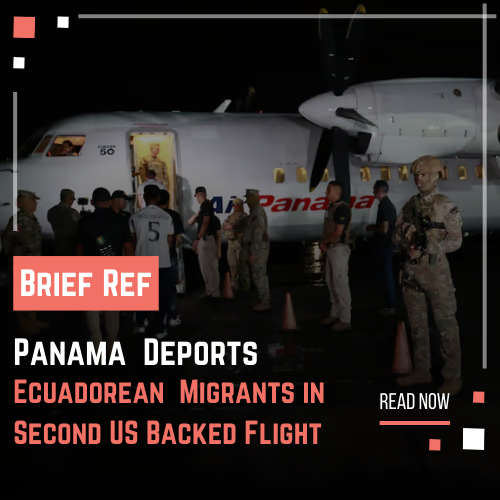
Recent Deportation Effort
In a notable development in the ongoing effort to manage migration flows, Panamanian authorities deport migrant groups to Ecuador on a second flight funded by the United States. A brief about this initiative is part of a broader agreement between the U.S. and Panama designed to curb irregular crossings and mitigate the surge of migration predominantly aimed at reaching the United States. The flight, which took off on Thursday evening, carried 30 Ecuadoreans who had been apprehended while attempting to evade a migration checkpoint on the perilous Darien Gap route.
Background of the U.S.-Panama Agreement
The collaboration between the U.S. and Panama reflects a strategic approach to addressing the complex issue of irregular migration. The agreement outlines several measures aimed at reducing the number of migrants making the treacherous journey through Central America and the Darien Gap, a notorious stretch of jungle that spans the border between Panama and Colombia. The U.S. has committed to supporting Panama’s efforts through financial assistance, including funding deportation flights, as part of a broader strategy to manage migration more effectively and humanely.
Details of the Recent Deportation Flight
The latest deportation flight, financed by the U.S., marked the second such operation under this agreement. The flight, which departed from Panama City, was bound for the coastal city of Manta, Ecuador. The Panamanian migration service reported that the migrant groups on board were deported after being intercepted for attempting to bypass a crucial migration checkpoint. The Darien Gap, a dense and challenging jungle region, remains a primary route for migrants seeking to reach the United States, despite the inherent dangers and difficulties associated with crossing this area.
The Darien Gap: A Dangerous Migration Route
Each year, thousands of migrants undertake the perilous journey through the Darien Gap, a vast and treacherous jungle that presents significant challenges to those seeking to traverse it. The route, which stretches between Panama and Colombia, is fraught with risks, including harsh environmental conditions, wildlife threats, and potential encounters with criminal elements. The migration checkpoint that the recent deportees sought to evade is a key component of Panama’s efforts to manage and monitor the flow of migrants passing through this hazardous region.
Implications of the U.S.-Panama Migration Agreement
The recent deportation flight underscores the ongoing efforts to address irregular migration through collaborative international agreements. By supporting Panama’s migration management efforts, the U.S. aims to reduce the number of migrants attempting dangerous crossings and to encourage more orderly migration processes. The agreement also reflects a broader trend in which countries work together to address the root causes of migration and improve the efficiency and effectiveness of migration management strategies.
Future Prospects and Challenges
While the deportation flights and agreements represent significant steps in managing migration, they also highlight the broader challenges associated with addressing irregular migration. Ensuring the safety and dignity of migrants, while balancing national security and immigration policies, remains a complex and evolving issue. The effectiveness of these measures will depend on continued cooperation between countries, as well as ongoing efforts to address the underlying factors driving migration.
Brief
The recent deportation flight from Panama to Ecuador, financed by the United States, is a noteworthy example of international collaboration aimed at managing irregular migration. As part of a larger agreement between the U.S. and Panama, this effort seeks to reduce the flow of migrants through dangerous routes like the Darien Gap and promote more orderly migration processes. The situation underscores the importance of continued cooperation and innovation in addressing the challenges of global migration.



